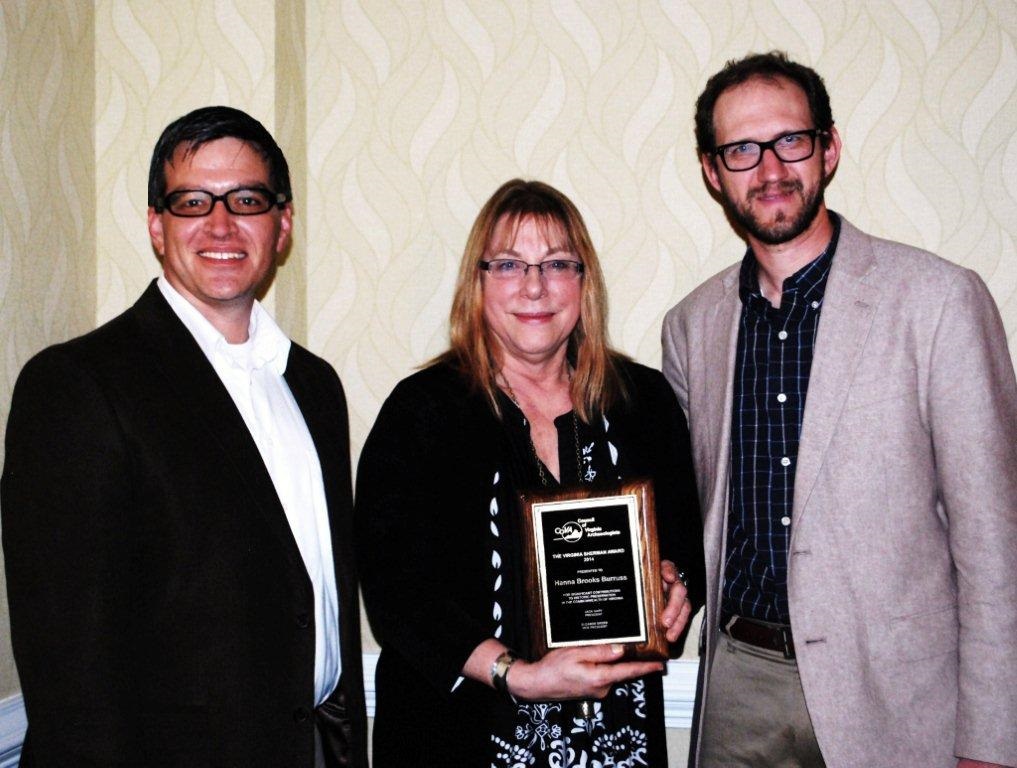In 2014, The Archaeological Conservancy’s Eastern Regional Office was proud to take part in the presentation of the Council of Virginia Archaeologists (COVA) 2014 Virginia Sherman Award to Hanna Brooks Burress (center). Hanna was recognized by the group of professional archaeologists at the COVA/ASV Annual Meeting and Awards Banquet held in Richmond, VA on October 10-12, 2014. The award was given to Burress by Dr. Jack Gary (right), President of COVA, for her “Significant Contributions To Historic Preservation In The Commonwealth Of Virginia” in recognition of her donation of property containing the Prince Edward Soapstone Quarry site to The Archaeological Conservancy. The site is one of the largest and best preserved prehistoric soapstone quarries in Virginia. Under Conservancy ownership the property will be managed as the Prince Edward Soapstone Quarry Research Preserve. Hanna was nominated for the award by Andy Stout (left), Eastern Regional Director of the Archaeological Conservancy.
“Each fall the Council of Virginia Archaeologists (CoVA) presents awards in memory of Michael Hoffman, Professor of Anthropology at the University of Virginia, and Virginia Sherman, Westmoreland County’s Historic Preservation Officer. The Hoffman Award, for organizations, and the Sherman Award, for individuals, recognize those outside of the professional archaeological community who have made significant contributions to archaeological site preservation or historic preservation within the Commonwealth.” –COVA website http://cova-inc.org/about/awards.html
The Prince Edward Soapstone Quarry is located on 12 acres of land near Farmville, Virginia. The site is considered to be the largest and most intact soapstone quarry that has been found in Virginia thus far. More than 150 piles of soapstone (also known as steatite) boulders and preforms span the length of the site. It was first documented by Jim Jordan, an archaeologist at Longwood University who uncovered stone axes and possible soapstone vessel fragments there. One particularly striking artifact is a soapstone boulder that has been carved with an image that appears to be a snake. The boulder piles were later mapped, and their linear pattern suggests that they sit on a seam of soapstone that runs along a ravine.
Preforms are steatite boulders that humans formed into an ovoid shape in preparation for making them into bowls. Creating the preform is the first step in soapstone vessel production, as the stones were more easily handled after they had been shaped into oval forms.
The quarry dates to the Late Archaic period (ca. 3000–1000 B.C.), the end of which was characterized by the production of vessels and other objects carved from soapstone. The vessels were generally shallow and oblong or rectangular with lug handles for carrying. The piles likely represent resource stockpiling.




